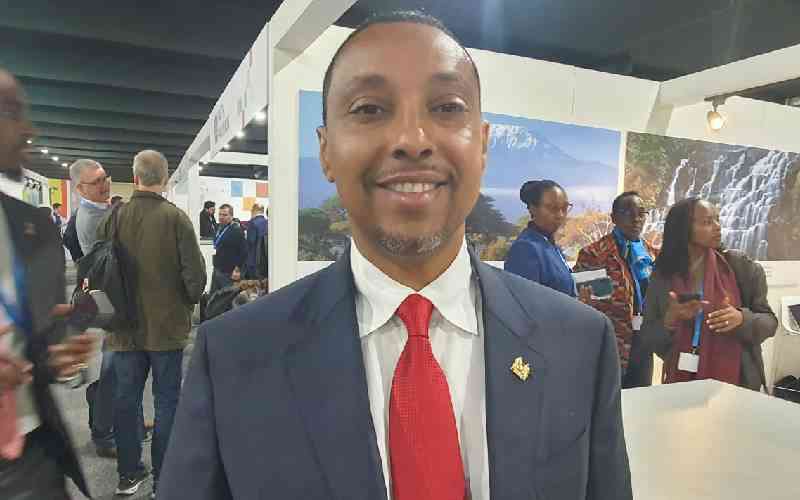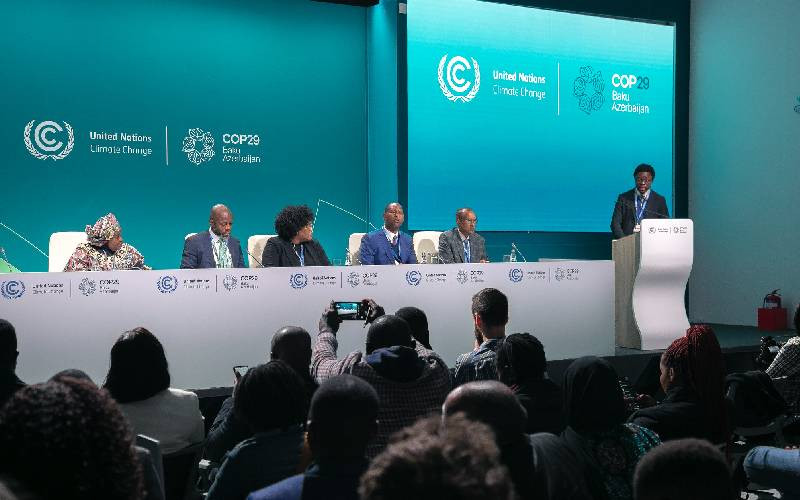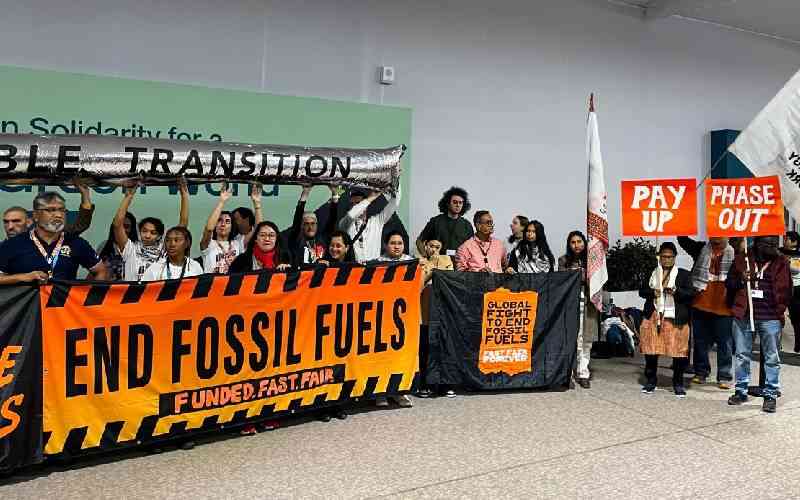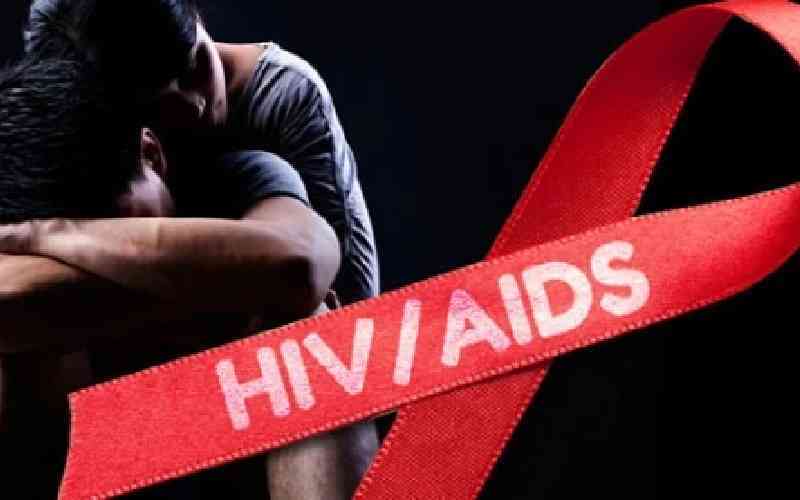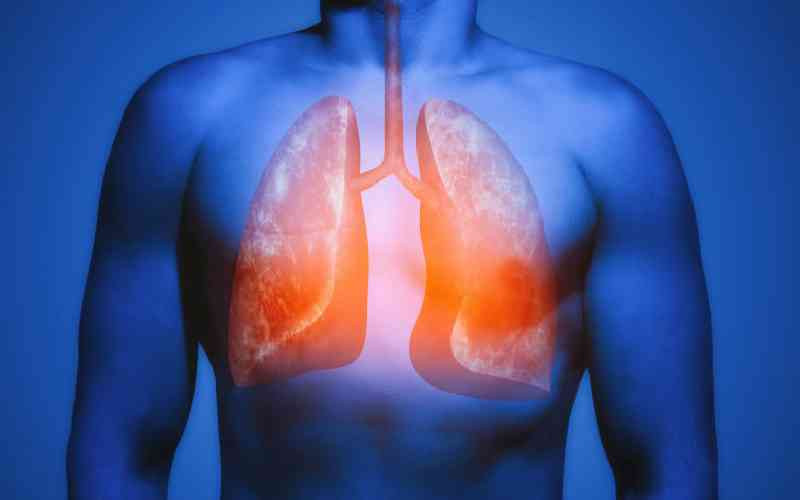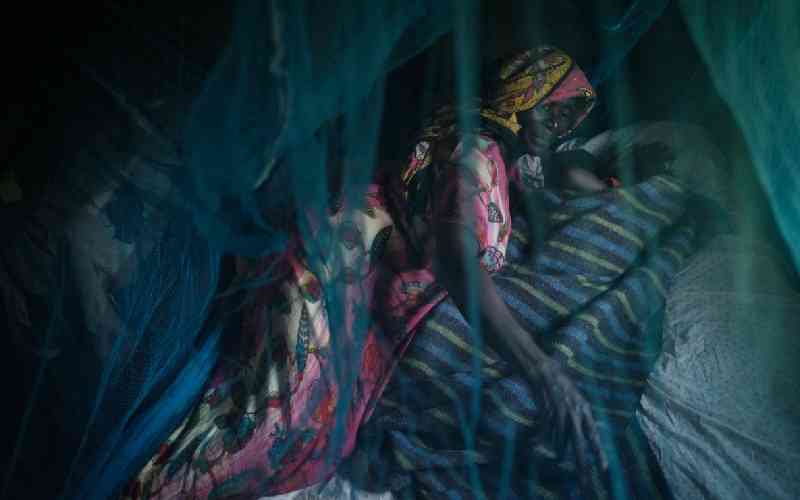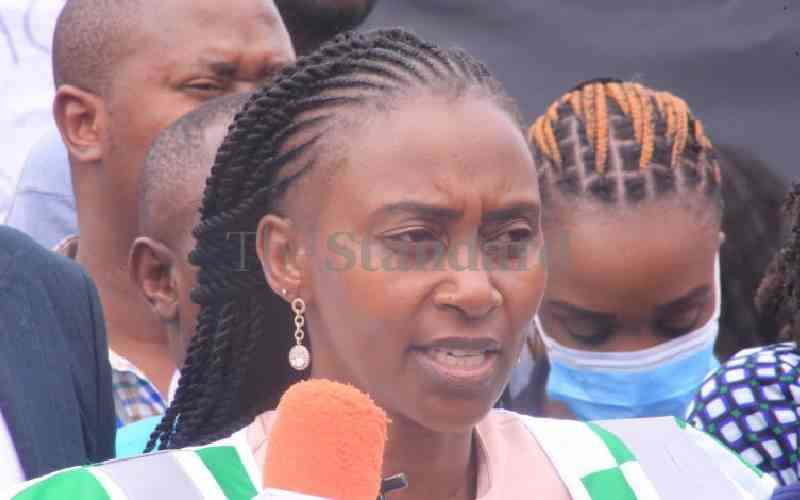
Diana Akumu with her 7-year-old son George Ouma who is suffering from brittle bone disease, a rare condition that makes bones weak and hence breaks easily. [Collins Oduor, Standard]
Seven-year-old George Ouma groans in pain as he tries to lift his heavily bandaged left leg.
He sustained a fracture in the arm and leg two weeks ago, confining him to a bed as he recovers.
“He has had over 30 fractures, with an equal number of operations in which surgeons have tried to fix his broken bones while avoiding implants due to his tender age,” explains his mother, Diana Akumu, as she stares at his frame which is smaller compared to his peers.
As a child, Ouma was healthy, albeit dull and slow, until trouble started when he turned two.
“One day he was sitting and stretched his leg to stand up and just like that, he broke a hip bone,” recalls Akumu, who took the boy to the Kenyatta National Hospital (KNH) where doctors found that the bone had snapped.
A few tests later, the doctors discovered that Ouma suffered from Brittle Bone Disease, also known as Osteogenesis Imperfecta (OI). The condition makes bones weak and susceptible to breaking. As a result, Ouma has had spent much of his time in hospital.
Three months after the first fracture he suffered yet another in the upper limb, again after stretching it.
“I feel so bad for him especially because of the accompanying pain. One time Ouma broke his right hand just by sneezing,” says his mother.
Vincent Owaa, an orthopedic surgeon at Jaramogi Oginga Odinga Teaching and Referral Hospital (JOOTRH), says that OI is a rare genetic disease which occurs due to lack of high-quality collagen, the protein which forms the framework for the bones.
He explains that without collagen, bones, including teeth and cartilage, can lack flexibility and strength, making them susceptible to fractures.
The disorder, which is incurable, disrupts the body’s ability to form strong connective tissue and to grow new bone tissue.
OI is a lifelong condition, and those affected by it experience physical pain due to frequent fractures.
“The bone weakness sometimes worsens and as the bones weaken, they become progressively crooked, causing deformed limbs and difficulties in walking or activity,” Owaa explains.
For young Ouma, his hands and legs have visible deformities. He cannot stand or do much on his own.
“He needs someone round the clock to support him with everything. I live in constant anxiety at the thought of any slight move leading to a fracture in one of his bones,” laments Akumu. “It breaks my heart seeing him in pain. It means he cannot play or make friends like boys of his age.”
There are drugs that strengthen the bones, but nothing can completely cure the condition. Those affected are advised to adopt a healthy lifestyle to maintain bone health.
“It is important for patients to get adequate calcium intake and enough exercise to maintain healthy body weight. Being overweight can worsen the condition,” says Owaa.
Surgeries are often required to put metal implants in the bones or spine to prevent fractures. Being a genetic disorder means taking down a family’s history when treating children in addition to the physical examination.
X-Rays allow a doctor to see current and past broken bones besides identifying defective bones.
The AIC Kijabe hospital receives an average of 10 to 15 patients with Brittle Bone Disease monthly and most are aged between one year and 18 years, says Dr Federico Sibona, a pediatric orthopedic surgeon at the hospital where some patients report up to 40 fractures a year.
“There is no cure for brittle bone disease,” says Dr Sibona, “but treatment can relieve symptoms, prevent breakage of bones, and maximise movement. Severe forms of the disease can affect the shape of the rib cage and spine, which can lead to life-threatening breathing problems.”
Health experts warn that the cost of treatment can be exorbitant with Owaa saying “a patient needs an average of Sh500,000 to restore a hip bone when fractured.”
Dr Sibona, on his part, says some patients need blood transfusion “and a single surgery on a broken bone costs about Sh90,000 to Sh130,000.”
However, there is new drug and telescopic nail (standard treatment for stabilising long bones and correcting deformities in Brittle Bone Disease). Both “will reduce pain with a reduced number of surgeries after frequent breaking of bones,” reassures Dr Sibona.
Bernard Ndemo, an occupational therapist at Kisumu County Hospital, says that lab tests are used to analyse the structure of children’s collagen and “the management course for OI in children is determined by their age, overall health and medical history.”
Ndemo explains that the ultimate goal of treatment is to prevent deformities and fractures and to allow the child to function as independently as possible but “there may be use of wheelchairs braces, and other custom-made equipment which could maximise the individual’s functional ability.”
For Akumu and Ouma, pain and anxiety are not the only thing that worries them as “there is a lot of stigma, and many stay away from us.”
But for now, she takes her son’s challenge a day at a time, hoping that medical interventions and constant prayers will cure her only child.
“I have hope that one day he will get help and attend school like other children.”
 The Standard Group Plc is a multi-media organization with investments in media platforms spanning newspaper print
operations, television, radio broadcasting, digital and online services. The Standard Group is recognized as a
leading multi-media house in Kenya with a key influence in matters of national and international interest.
The Standard Group Plc is a multi-media organization with investments in media platforms spanning newspaper print
operations, television, radio broadcasting, digital and online services. The Standard Group is recognized as a
leading multi-media house in Kenya with a key influence in matters of national and international interest.


